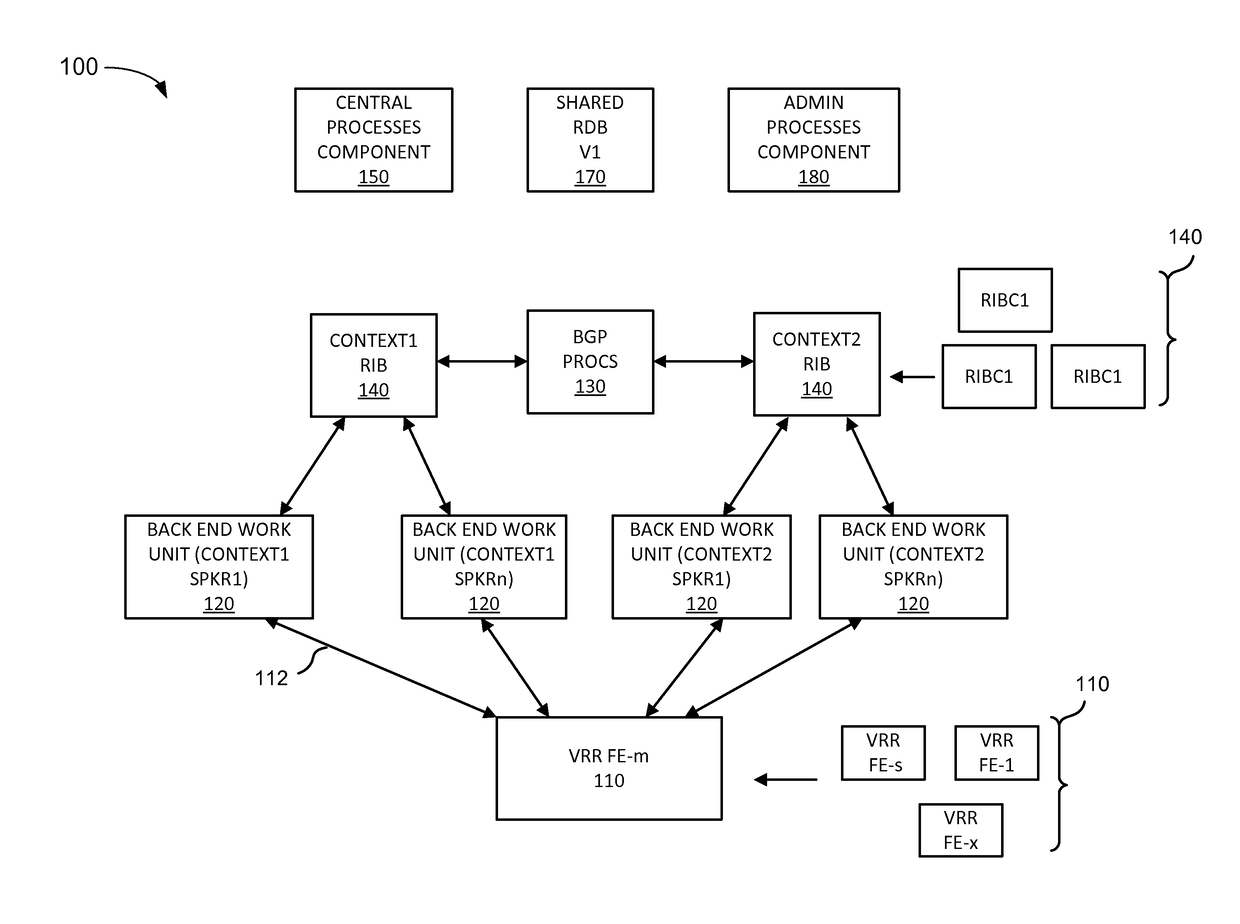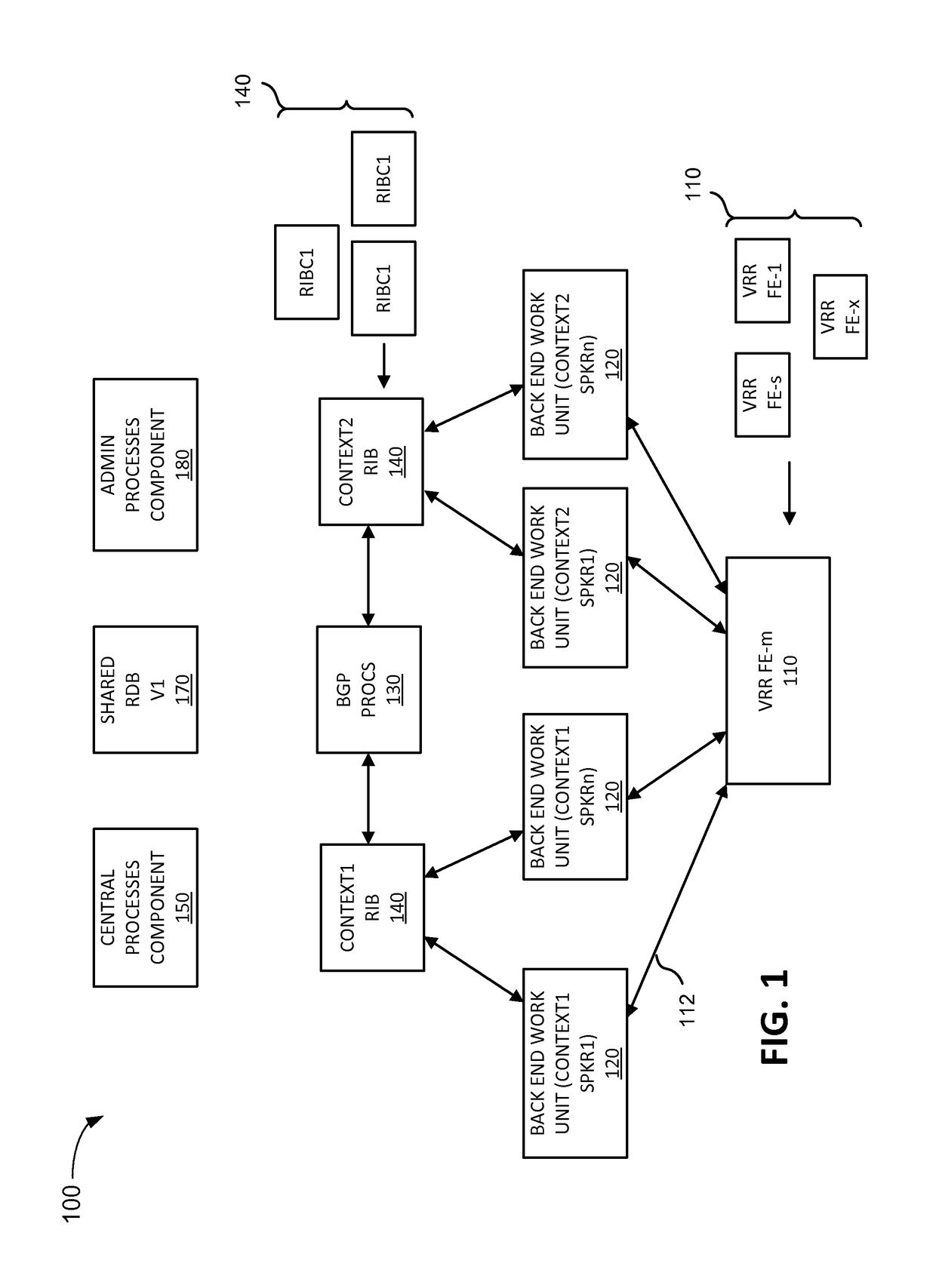Networking functions in a micro-services architecture
a network function and micro-service technology, applied in the field of network function in a micro-services architecture, can solve the problems of network applications for micro-services, such as webscale applications, often facing implementation difficulties, and currently no load-balancing mechanism for network applications across data centers
- Summary
- Abstract
- Description
- Claims
- Application Information
AI Technical Summary
Benefits of technology
Problems solved by technology
Method used
Image
Examples
Embodiment Construction
[0012]The following detailed description refers to the accompanying drawings. The same reference numbers in different drawings identify the same or similar elements. Also, the following detailed description is exemplary and explanatory only and is not restrictive of the invention, as claimed.
[0013]Systems and / or methods described herein may implement networking functions in a micro-services architecture. The micro-services architecture may reduce or eliminate three types of the implementation difficulties for monolithic networking functions. First, the micro-services architecture may dissemble and distribute monolithic network functions. Secondly, the micro-services architecture may distribute the sub-components of the network functions that require persistent sessions, without relying on persistent speakers. Finally, for large-scale network functions, the micro-services architecture may create hyperscale capabilities by independently scaling the sub-components.
[0014]The networking ...
PUM
 Login to View More
Login to View More Abstract
Description
Claims
Application Information
 Login to View More
Login to View More - R&D
- Intellectual Property
- Life Sciences
- Materials
- Tech Scout
- Unparalleled Data Quality
- Higher Quality Content
- 60% Fewer Hallucinations
Browse by: Latest US Patents, China's latest patents, Technical Efficacy Thesaurus, Application Domain, Technology Topic, Popular Technical Reports.
© 2025 PatSnap. All rights reserved.Legal|Privacy policy|Modern Slavery Act Transparency Statement|Sitemap|About US| Contact US: help@patsnap.com



